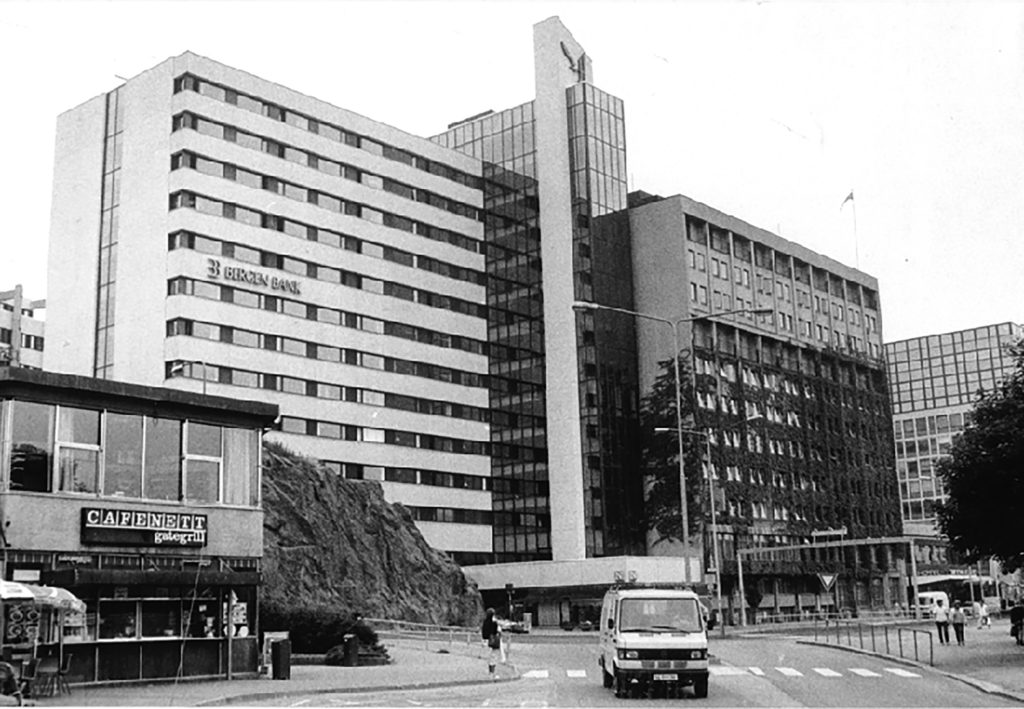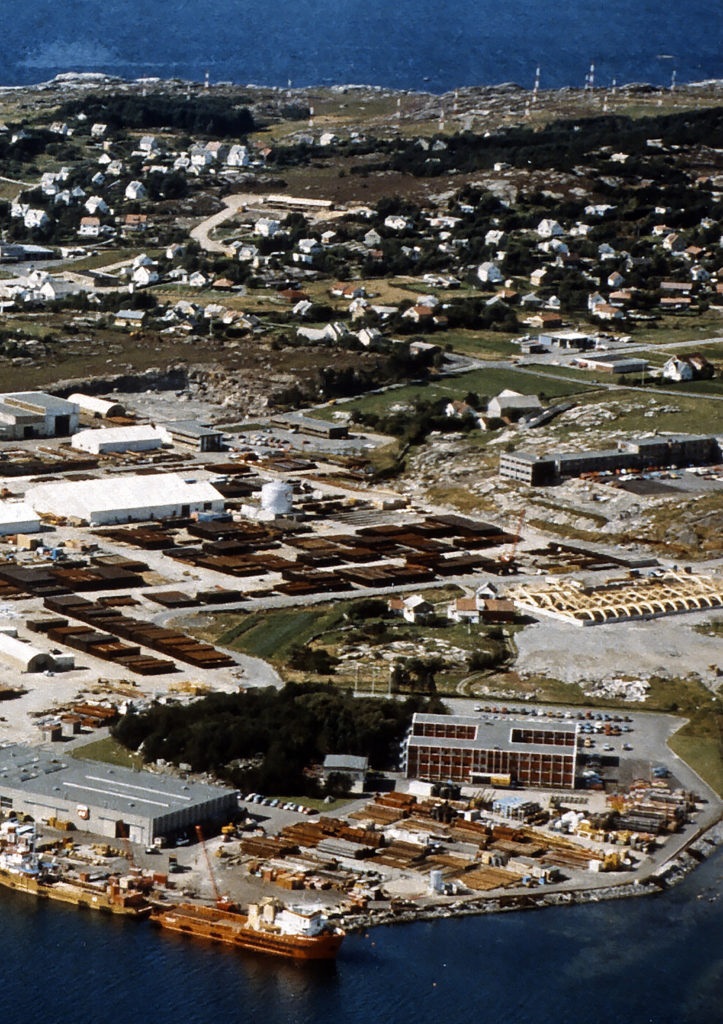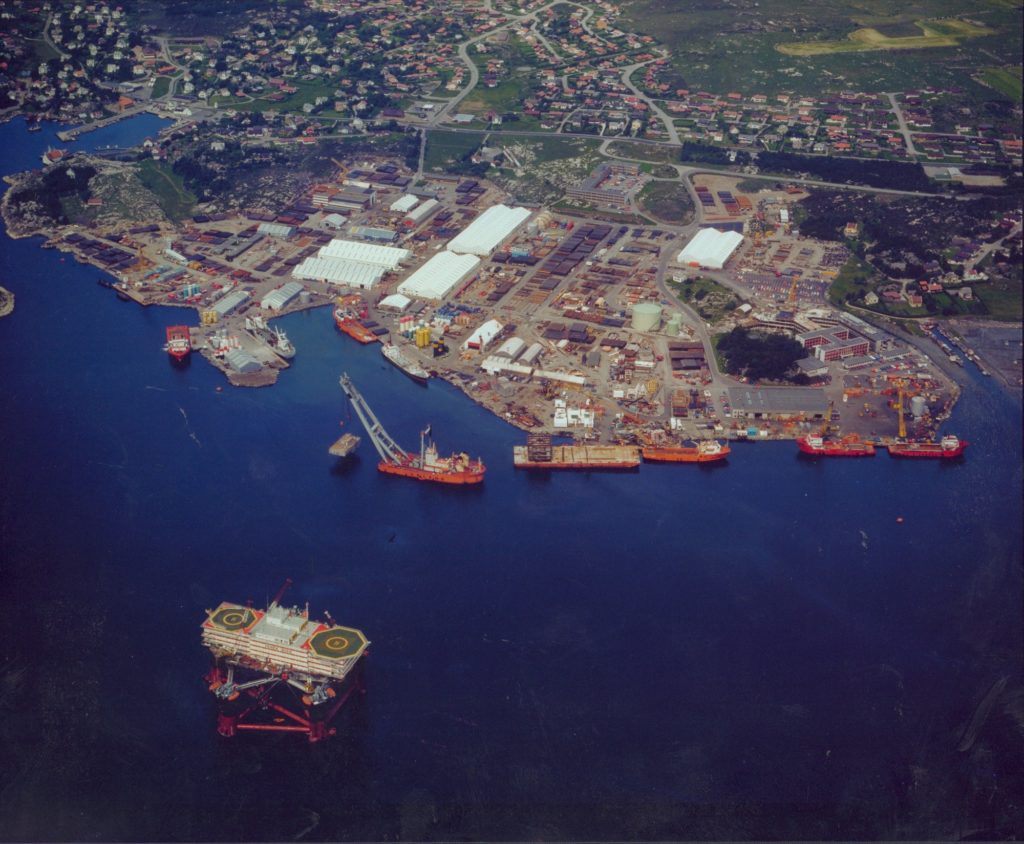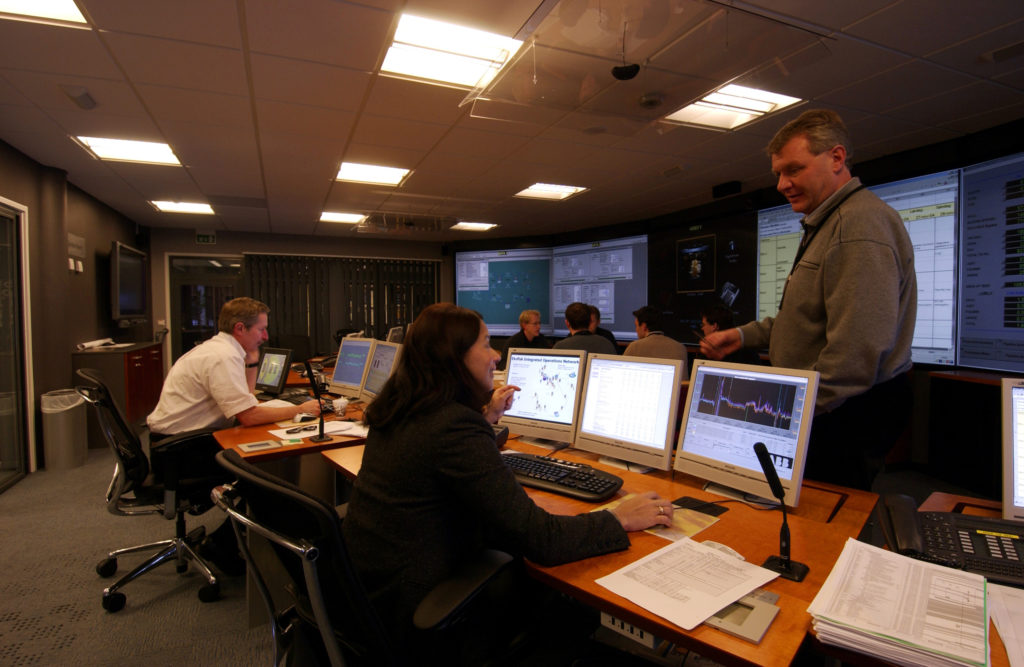Base operations

Dusavik base, 1966-73
The contract for Phillips’ first supply base in Norway was signed with Stavanger-based tanker company Smedvig Tankrederi on 25 April 1966.
It covered the hire of outdoor storage and quay areas as well as a new combined warehouse and office building which was modest by today’s standards.
Located at Dusavik just outside Stavanger, Phillips ranked as the first tenant at what was to become one of the two big offshore supply bases in the district.
The drilling operations which led to the discovery of Ekofisk were served from Dusavik. While the lease ran until 1981, it only functioned as the main base for the Stavanger area until 1973.
Rapid organisational growth made the premises in Dusavik too small by that year, and additional space was obtained by taking a clearly creative approach.
So Phillips secured premises in a soap factory, a Chinese restaurant and the bar and other areas of Stavanger’s Alstor Hotel. And many of those hired in 1973 are sure to remember that they were interviewed at the city’s Atlantic Hotel.
 basevirksomhet, engelsk,
basevirksomhet, engelsk,Phillips base, 1973-81
Some activity had been established at the Aker Norsco base in Tananger during 1972, but it was not until the autumn of 1973 that the headquarters for Ekofisk was transferred from Dusavik.
 basevirksomhet, 1976, engelsk,
basevirksomhet, 1976, engelsk,That occurred with the occupation of the H Building at Tananger, where Phillips had signed a lease with the base company the year before.
This covered the hire of outside storage areas, quays, warehousing, a canteen and an office building – a complete supply base. All the buildings were purpose-built.
The lease gave Phillips an option to acquire the whole facility at a later date, which the company duly exercised in the summer of 1979.
To varying degrees since 1973, the operator has needed to lease both warehousing and offices from Aker Norsco – partly in temporary structures and partly in permanent premises.
From 1973 to 1976, exploration operations with the Ocean Viking rig continued to be run from the Dusavik base. The charter then expired, and remaining activities were moved to Tananger.
Lack of space at the latter premises meant that the training department was transferred to Dusavik and remained there until the lease expired in 1981.
Similar shortages meant extra premises had to be leased around Stavanger. This growing problem led to plans being laid from 1978 for a significant expansion at Tananger.
Phillips base since 1981
The new building was gradually occupied from December 1980 and formally opened in August 1981. Once it had been finished, the old H Building was completely refurbished to the same standard.
This expansion marked a significant improvement in working conditions for many employees, and helped to enhance efficiency by gathering much of the organisation under one roof.
The development was originally intended to meet all needs for office space, with the exception of the project department’s requirements.
However, it became clear even before the new building was occupied that this goal would not be reached. But it proved possible by and large to cease hiring space outside Tananger.
 Løfteskip, Uglen, Norscobasen,1980, phillips, sola, olje, inntekter
Løfteskip, Uglen, Norscobasen,1980, phillips, sola, olje, inntekterTo deal with developments in the supply services for Ekofisk, Phillips entered into a contract with Aker Norsco on the construction of a larger and more modern warehouse.
This building and associated offices were occupied in late 1982/early 1983, and were regarded as a model example for the purpose.
The waterflooding project on Ekofisk received a green light in 1983, which created the need for more office space to accommodate the project department.
Since a quick start was important, the new building in Tananger was ready three months after the contract with Aker Norsco had been signed.
Premises utilised by Phillips in the Stavanger area by 1988 comprised 20 000 square metres of offices, 10 000 square metres of storage space and 850 square metres of workshops. In addition came the offices at Munkedamsveien in Oslo.
Another new building opened at the Tananger base in July 1996, which meant the whole workforce was assembled on one site in two connected premises.
While the old offices covered 14 000 square metres, the new seven-storey building has an area of 11 300 square metres and provides 420 additional office spaces.
It also accommodates a 600-square-metre conference centre, as well as a gym and a swimming pool measuring eight by 12.5 metres in the basement.
The Tananger base was sold in July 1996 to Aker Base, including buildings, furniture and fittings, and the deepwater quay.
Activities at the base
The Phillips base at Tanager plays a central role in operating the Greater Ekofisk platforms. All necessary supplies allowing these installations to do their job pass through it.
Warehouse operation at the base covers five main functions: goods reception, spare parts store, accounting, pipe store and goods dispatch.
The spare parts store is managed with the aid of a comprehensive computer system with full information for offshore personnel to log on directly and check availability.
When goods are received at the warehouse, they are marked with a purchase number and all data concerning the order is entered. They are packed out, checked and sent for shipment offshore.
The workshop, located in the same building as goods reception, deals with such jobs as mechanical repair of diesel engines, pumps, valves, heat exchangers and compressors.
It also repairs base equipment, like forklift trucks, cranes and fire-extinguishing systems. In addition, the shop produces pipework, pressure tanks and other structural welding.
The head office for Phillips’ activities in Norway stands alongside the supply base for the platforms in the Greater Ekofisk Area.
 basevirksomhet, engelsk,
basevirksomhet, engelsk,